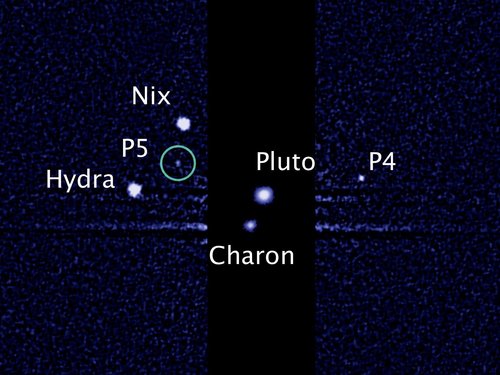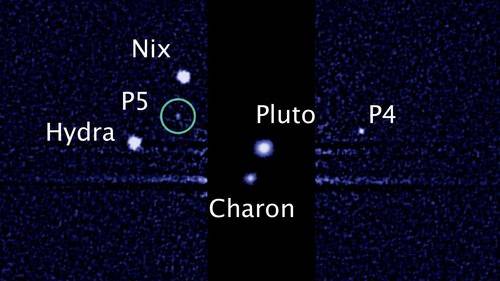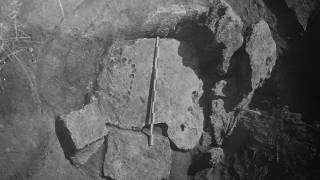Pluto’s fifth moon discovered
Source: cosmiclog.msnbc.msn.com
Astronomers using the Hubble Space Telescope have discovered Pluto’s fifth moon, a little more than three years before a NASA space probe is due to sail past the dwarf planet and its tribe of satellites.
This photo from the Hubble Space Telescope shows Pluto and its five known moons, including a newly discovered satellite indicated as P5. Its provisional name is S/2012 (134340) 1. M. Showalter / SETI Institute / NASA / ESA
The irregular moon, estimated to be 6 to 15 miles (10 to 25 kilometers) across, was found in the course of checking out the potential collision hazards facing NASA’s New Horizons spacecraft for the Bastille Day flyby on July 14, 2015. "The inventory of the Pluto system we’re taking now with Hubble will help the New Horizons team design a safer trajectory for the spacecraft," the mission’s principal investigator, Alan Stern of the Southwest Research Institute, said in a Hubble news release.
Stern and his colleagues suspect this fifth moon won’t be the stuff they find in Pluto’s neighborhood. "The discovery of so many small moons indirectly tells us that there must be lots of small particles lurking unseen in the Pluto system," said Harold Weaver of the Johns Hopkins University Applied Physics Laboratory.
Call it P5 ... for now
The fifth moon is currently known only by its provisional names: S/2012 (134340) 1, or P5 for short. It’ll be up to the discoverers to propose a more lyrical name to the International Astronomical Union, which classified Pluto as a dwarf planet in 2006.
P5 was detected in 14 separate sets of images taken by Hubble’s Wide Field Camera 3 on June 26, 27 and 29 plus July 7 and 9. The Hubble team says it’s in a 58,000-mile-diameter circular orbit around Pluto that steers clear of the dwarf planet’s four other satellites — including the biggest moon, Charon. Two other moons, Nix and Hydra, were discovered in 2006, and the fourth moon (P4) was found in Hubble data last year.
"The moons form a series of neatly nested orbits, a bit like Russian dolls," team leader Mark Showalter of the SETI Institute said in today’s news release.
[...]
Read the full article at: msnbc.msn.com
Video from: YouTube.com






















